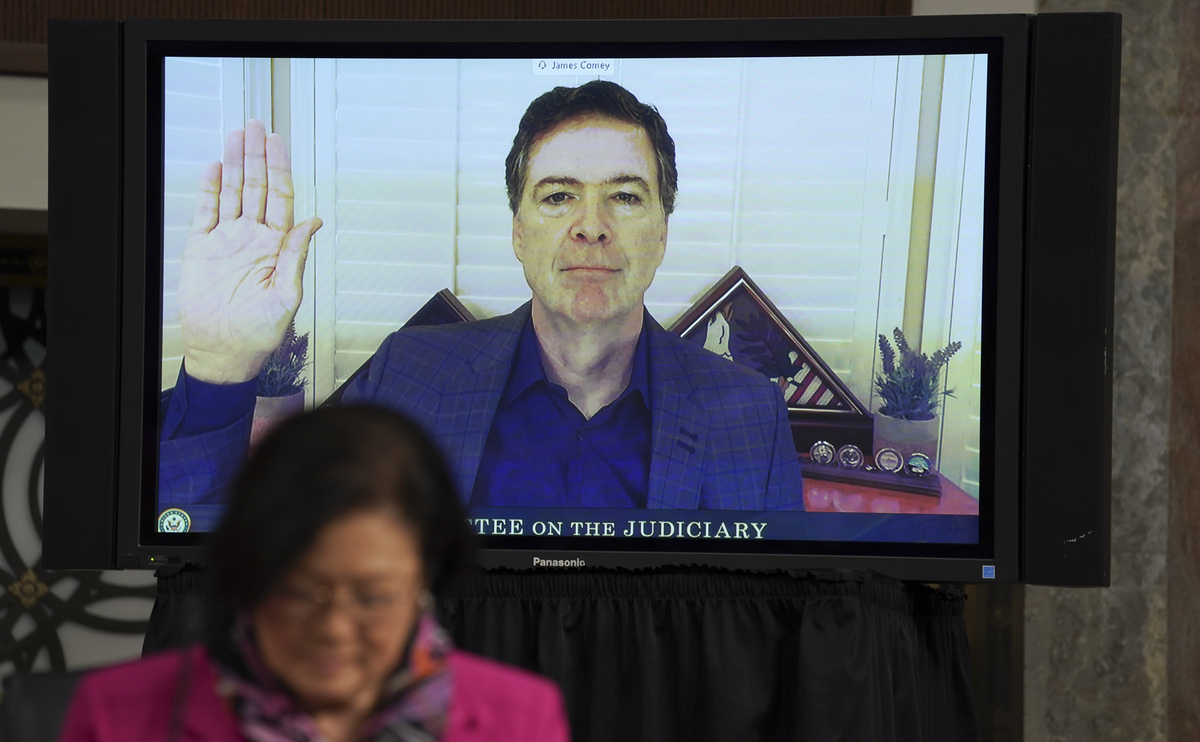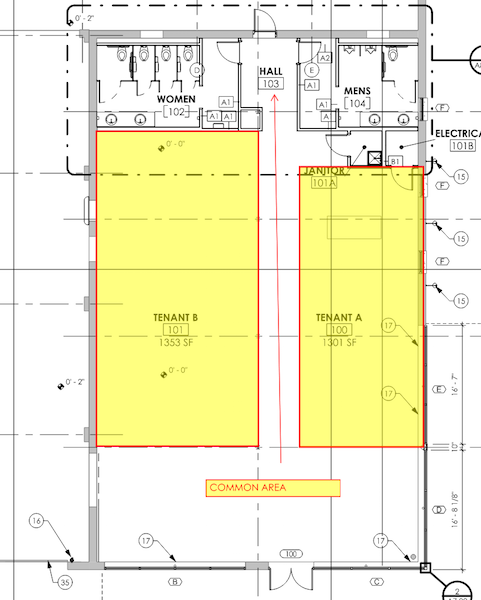
A man was charged on Wednesday with shooting two Los Angeles County sheriff’s deputies who were sitting in their patrol car, an attack that was captured on video and that prompted widespread condemnation, including from both presidential candidates.
The man, Deonte Lee Murray, 36, of Compton, Calif., was charged with two counts of willful, deliberate and premeditated attempted murder of a peace officer and possession of a firearm by a felon, according to the Los Angeles County District Attorney’s Office.
Mr. Murray was arraigned on Wednesday in Los Angeles County Superior Court, where he pleaded not guilty and was ordered held with bail set at $6 million, according to his lawyer, Jack Keenan. If convicted, Mr. Murray could face life in prison.
Mr. Keenan said Mr. Murray was being harassed and threatened in jail by deputy sheriffs who were denying him food and waking him up at all hours. He said Mr. Murray was also being held in a unit for suicidal inmates and forced to wear a padded blanket known as a “suicide gown,” even though he is not suicidal.
Mr. Keenan said he had made a motion in court to have Mr. Murray relocated, but the motion was denied. “That’s my biggest concern with Mr. Murray,” he said, “his safety in jail.”
Mr. Keenan said he could not comment on the charges, because he had not seen the evidence against his client.
The Los Angeles County Sheriff’s Department said that independent health care professionals had evaluated Mr. Murray’s mental state. It said housing decisions based on those evaluations were “made at the recommendation of the medical staff, for the welfare of the inmate.”
“Deputies always treat everyone in our care and custody with the same professionalism, regardless of their charges,” the department said. “Sadly, Mr. Murray is not the only suspect in our custody at this time accused of assault on law enforcement. Mr. Murray has been in our custody for several weeks, but he was just identified as the suspect in the shooting this morning. Therefore it is odd these allegations of mistreatment only surfaced after that public identification.”
The authorities said that at about 7 p.m. on Sept. 12, Mr. Murray walked up to the deputies’ car outside the M.L.K. Transit Center, a metro station in Compton, and opened fire, striking the deputies multiple times. He then ran from the scene and drove off in a Mercedes that he had stolen in a carjacking on Sept. 1, the authorities said. Mr. Murray has also been charged in connection with that carjacking, the authorities said.
The deputies, a man, 24, and a woman, 31, who is the mother of a 6-year-old boy, were taken to a hospital in critical condition and underwent surgery, department officials said. The female deputy was able to call for help on a police radio despite having been shot, according to Alex Villanueva, the Los Angeles County sheriff.
Both deputies were recovering at home on Wednesday and face additional reconstructive surgeries, Sheriff Villanueva said.
The authorities said Mr. Murray appeared to have acted alone. Asked about a motive, Capt. Kent A. Wegener of the Los Angeles County Sheriff’s Department, said: “Other than the fact that he obviously hates policemen and wants them dead — not specifically.”
Jackie Lacey, the Los Angeles County district attorney, said the deputies “became victims of a violent crime for one reason: They were doing their job and they were wearing a badge.”
Sheriff Villanueva said that after the attack, bystanders were “celebrating and cheering” that the deputies had been shot.
“These acts, and then that day, I will not forget it,” Sheriff Villanueva said at a news conference on Wednesday. “It represents the worst of humanity and it shocked the whole nation.”
The day after the shooting, President Trump, who has campaigned on a call for “law and order” and who frequently depicts American cities as bastions of violence and hostility toward the police, responded on Twitter to a video of the shooting. “Animals that must be hit hard!” he wrote.
Mr. Trump, commenting on the deputies, also wrote: “If they die, fast trial death penalty for the killer. Only way to stop this!”
Former Vice President Joseph R. Biden Jr., the Democratic presidential nominee, also denounced the shooting.
“Acts of lawlessness and violence directed against police officers are unacceptable, outrageous, and entirely counterproductive to the pursuit of greater peace and justice in America — as are the actions of those who cheer such attacks on,” he said in a statement on Sept. 13.
Video of the shooting showed a gunman approaching the passenger side of the car from behind, firing several rounds and then running away. Additional surveillance video showed one deputy exiting the passenger side of the patrol car, hand on head, according to The Los Angeles Times.
Deputy Juanita Navarro, a spokeswoman for the Sheriff’s Department, said the deputies had been shot multiple times in the upper torso, which she said could include the head and face. She declined to elaborate.
Mr. Murray was linked to the shooting of the deputies after he was connected to an unrelated carjacking on Sept. 1, when he shot a man in the leg and took his Mercedes in Compton, Captain Wegener said.
Witnesses and video in the area where the deputies were shot indicated that the Mercedes that the gunman drove that day was the same one that had been carjacked on Sept. 1, Captain Wegener said. The carjacking suspect’s photograph, when compared with video of the man who shot the deputies, further strengthened the case against Mr. Murray, he said.
On Sept. 15, the authorities tried to arrest Mr. Murray in connection with the carjacking, but he drove off in a Toyota, prompting a police chase, Captain Wegener said. During that chase, he added, Mr. Murray threw a pistol from the car, which was later recovered.
Ballistics testing showed the pistol was the same one used to shoot the deputies on Sept. 12, Captain Wegener said. Forensic evidence also linked the gun to Mr. Murray, he said.
Mr. Murray was eventually arrested after he abandoned the Toyota and tried to run from the police in Lynwood, Calif., Captain Wegener said. The authorities also recovered the stolen Mercedes, and have reviewed dozens of video clips that show Mr. Murray’s travels before, during and after the shooting on Sept. 12, he said.
As a felon and a registered drug offender, Mr. Murray was prohibited under the law from possessing a gun, Captain Wegener said. He said Mr. Murray’s record included previous convictions for the sale and possession of drugs, receiving stolen property, burglary and terrorist threats. He also said Mr. Murray was “associated with a couple of different gangs,” which he declined to name.
Larente Murray, Mr. Murray’s sister, said her brother had a rough upbringing, which she described as unstable and dysfunctional. She said he had “turned to the streets” and she had not spoken to him in three years.
“I want people to know that he’s human and, whether he did it or not, he needs to be treated fairly,” she said. “He needs a fair chance. And I’m concerned for his safety. I want justice for him and for him to know his family has his back.”
October 01, 2020 at 05:24AM
https://ift.tt/3n3hco1
Man Charged With Attempting to Murder Two Los Angeles Sheriff’s Deputies - The New York Times
https://ift.tt/3d5QSDO

















